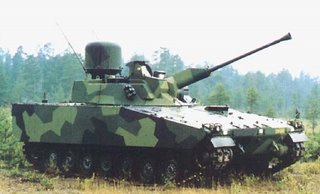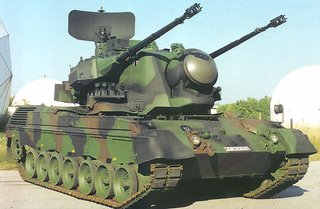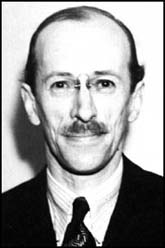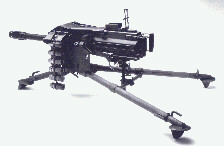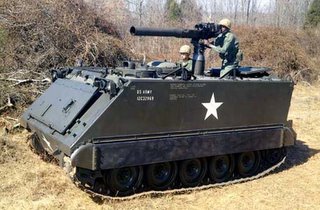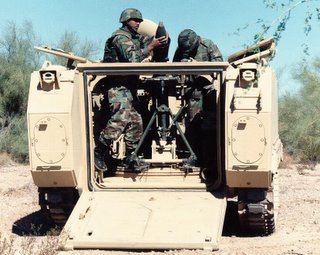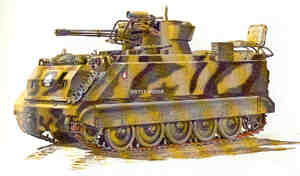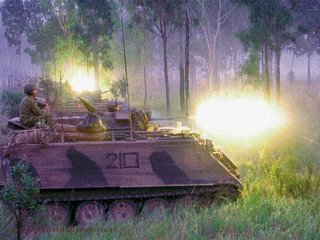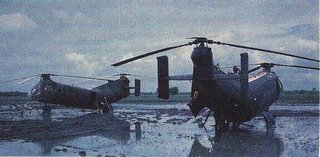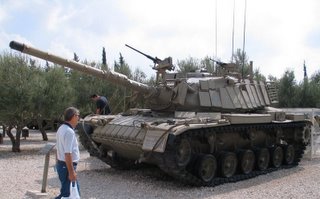
This is coolbert:
Conclusion.
We are familiar with the end of World War Three [WW3].
The United states was the
winner, the Soviet Union the
loser.
In the end, the Soviet went out
with a whimper, not a bang. To the betterment of the world, the end was not shadowed by a nuclear holocaust or a mushroom cloud [s]!!
Light prevailed, darkness was held at bay.
And
the reasons for this?
In a nutshell, both the United States and the Soviet Union were
MILITARILY strong, but
the United States was societal very strong, the Soviet very societal weak.
[I would state that the Soviets
WERE militarily strong. The western governments were correct in their appraisal of Soviet military might. The Soviet military was a definite threat to the survival of the west in case of all-out war. This cannot be denied!!]
I am sure such an appreciation would surprise some, and infuriate others.
"Surely the Soviets
WERE NOT societal weak?", many would say.
Consider the rate of defection to the west, however, of the elite from the old Soviet Union alone
In my opinion this
one indicator alone tells us something very significant.
The rate of defection of elites
from the United States and the west in general to the Soviet Union was
considerably less than the rate of defection from the Soviet side to the west. Elites from the west by and large
JUST DID NOT defect to the Soviets.
Elites from the Soviet system
DID defect to the west. During some periods, in considerable numbers at that!!
Elites in the old Soviet Union
DID enjoy privileges that set them markedly apart from the rest of the population.
These privileges included a general exemption from the stifling, overbearing, draconian and repressive governmental watchdog systems most epitomized in the Soviet Union by the internal security apparatus of the KGB [and it's many forebears.]
Soviet elites also enjoyed an access to consumer goods that was totally absent among the average-run-of-the-mill Soviet citizen. A markedly better standard of living for the elites was obtainable that
WAS NOT even dreamed of being possible for the average Soviet citizen.
And yet the elite Soviet citizenry on many occasions did defect to the west, again, from time to time, in numbers.
This should have told the western governments, the intelligence services in the west, and the average western man-in-the-street that something
was very wrong with the Soviet system. Elites should
NOT BE motivated to defect!! As simple as that!!
Consider the life of the child of privilege Vladimir Sakharov. A child of a Soviet elite [the father was a diplomatic courier]. According to Sakharov, after his defection:
"virtually everything in the commodious Sakharov apartment near the American embassy came from abroad. Most of the
furniture was Scandinavian; the
refrigerator Finnish, the
vacuum cleaner a Hoover, the
stereo a Philips, the
television from RCA, the
short-wave radio a Grundig, the
shower head from Sears, Roebuck. The first
coffee Sakharov ever tasted was Nescafe'; his first
cigarette was a Winston and his first
whiskey White Horse. His
best suit came from Brooks Brothers and his favorite
tweed jacket from the English Shop in Copenhagen. He boasted a collection of nearly five hundred
American records."
Such were the Soviet elites enamored with American and western goods and the "western way of life" in a big way. Period!!
Also consider the comments of that other Soviet defector who I quote in blog entries on a pretty regular basis. The man who writes under the nom de plume' of Victor Suvorov. Writing of Soviet science and technology, Suvorov says:
"But what sort of science is it, if the Soviet Union can produce the first automatic
satellite destroyer in the world, but cannot produce an ordinary compact
small-engineered car? The Soviet Union has to buy all it's technology for the production of small cars from Italy. What are Soviet scientists up to if the Soviet Union has first-class
military poisons but has to buy
fertilizer technology from the United States? What are the sixty billion roubles spent on if the USSR constructs gigantic
trans-horizontal radars, ultra-high frequency
transmitters for communications with submarines whose underground aerials amount to thousands of kilometers in length - - but has to buy technology for the production of ordinary household
television sets from France?"
[Not only auto production was purchased from Italy. Truck manufacture as well. This was the Kama river works. Highly touted in it's day. A city called Togliatti [an Italian communist] was built just to accommodate the workers for the factories to manufacture autos and trucks for the Soviet "market". Never heard how successful this project was, but at the time it was considered to be very major!!]
[military poisons are of course poison gas of the most sophisticated variety!!]
[trans-horizontal radars are of the over-the-horizon type. As was most exemplified by the "Russian Woodpecker" that bedeviled the high-frequency bands in the 1970's. This stuff disappeared too as did the Soviet Union!!]
Visitors from the west to the Moscow often commented on how the Soviets were not "at a par" materially with the west, but "did not have it that bad!!". This was an observation made by many observers. Alexander Solzhenitsyn even wrote a book entitled, "Moscow Is Not Russia!!" Meaning that in the whole of the country, things were not as they seemed in Moscow. Moscow was the showcase. Outside of Moscow, watch out!!
[not so long ago there was a series of television programs called, "Fifty Miles Outside of Moscow". An American television journalist would randomly travel fifty miles outside of Moscow to see what the rest of Russia was like. What was found was a standard of living and a way of life considerably less than what was found in Moscow. American and other western "observers" just had a view of the Soviets obtained from Moscow that was vastly and incorrectly skewed.]
It should also be appreciated that the Twentieth Century is deservedly called the
"American Century". Meaning that the U.S. was dominant in the world in a military, economic, and intellectual sense as was say Britain in the nineteenth century. A dominance that was of course challenged by the Soviets.
How pervasive was the American dominance? And how serious was the Soviet challenge, not only in the military sense, but also in say the intellectual sense?
The awarding to Nobel prizes could well be an
excellent indicator of how competitive the two nations were. In the arena
beyond the military sphere.
With regard to Nobel prizes, the U.S.
had no peer.
In this regard the Soviets were
far outclassed.
That is
NOT to say that the Soviet
did NOT have excellent scientists and intellectual thinkers. Far from it. They had those types of persons and in significant numbers. But it is very clear that the
REAL innovative intellectual ferment existed in the U.S. So much so that it is not even a contest.
For instance, during the period of
1945-1990.
In the awarding of Nobel Prizes in the
field of medicine, Soviet doctors won
NONE . Nada, nil, zilch, nechovo [Russian for nothing!!]. U.S. researchers won thirty three during the same period.
In the awarding of Nobel prizes in the
field of economics, Soviet economists won
ONE! That is
ONE [1]!! Of course, one can reason that with Marxist/Leninist thought explaining the world and economics in particular to begin with, why would the soviets even NEED to study economics. U.S. citizens won the Economics prize eleven during the same period.
In the awarding of Nobel Prizes for
peace, the Soviets had
TWO awards given. American citizens won the Peace prize eleven times during the same period!!
One was to Andrei Sakharov, the esteemed Soviet physicist. And
WHY did Andrei win his Nobel Prize for peace?
FOR BEING A DISSIDENT AGAINST THE COMMUNIST SYSTEM OF HIS HOMELAND. A HOMELAND THAT HE WAS A FERVENT PATRIOT OF!! A MAN YOU WOULD HARDLY THINK WOULD EVEN CONSIDER DISSIDENCE AGAINST THE SYSTEM THAT SO HANDSOMELY REWARDED HIM!!

The other Soviet citizen awarded the Nobel Peace prize was
Gorbachev. This I consider to be a joke in the extreme. Gorbachev was a man just
ALONG FOR THE RIDE!! A caretaker who just was there at the shutdown and nothing more.
NOTHING he did influenced things to the degree that it has been thought. He did
NOT deserve this award!!
In the awarding of Nobel Prizes for
literature, the Soviets did pretty good during the period 1945-1990.
Four Soviet citizens won the prize for literature during this period. American writers won five times during this period.
In three of those cases, however, the awards were
tainted. And possibly the fourth award too!!
Tainted??!! How so!!??
Joseph Brodsky the poet was a political prisoner and an exile. Told to go!

In the case of
Boris Pasternak [Dr. Zhivago], Pasternak was told if he left the country to accept his award,
DON'T BOTHER TO RETURN!!

In the case of
Alexander Solzhenitsyn [First Circle], Solzhenitsyn was actually stripped of his Soviet citizenship and tossed out of the country for good. Expelled for his writings.

Brodsky, Pasternak, and Solzhenitsyn all were dissidents that in a very mild way, protested the Soviet regime and all it's trappings. For this they became pariahs and exiles, not tolerated!!
In the case of
Mikhail Sholokhov [Quiet Flows the Don], it is questioned as to whether Sholokhov
EVEN WROTE THE BOOK IN THE FIRST PLACE. The rumor is that Quiet Flows the Don is based upon a manuscript taken off a White Army officer during the Russian Civil war!!

Consider this regarding Mikhail Sholokhov:
"The story of Mikhail Sholokhov's rise to his reign as king of Soviet literary officialdom is none other than
a supreme farce. Decade after decade his pen failed to create anything worth reading. Meanwhile, his mouth created nothing but propagandistic banalities." (Vassily Aksyonov, an exiled Russian novelist in the New York Times, March 10, 1985)
Quiet Flows the Don is Sholokhov most controversial work and it has been alleged by Aleksandr Solzhenitsyn among others, that much of the novel
was plagarized from the writer Fyodor Kryukov, a Cossak and anti-Bolshevik, who died in 1920 of typhoid fever. Several studies has been published on this subject: R.A. Medvedev's Problems in the Literary Biography of Mikhail Sholokhov (1977) was criticized in Slavic and East European Journal in 1976 by Herman Ermolaev. Additional information is in A Brian Murphy's studies of Tikhiy Don in the New Zealand Slavonic Journal (1975-77) and the Journal of Russian Studies, no. 34 (1977). Sholokhov's other works are not on his masterwork's level, but the accusations remain largely unproven. Critics have argued, that he
could not have written all or part of the novel because of his young age and because Quiet Flows the Don described atrocities on both sides impartially. In 1984 Geir Kjetsaa and others published their study The Authorship of the Quiet Don, where computer study supported the authorship of Sholokhov. Most of the manuscripts were lost when the Germans occupied Veshenskaya , but in 1987 some two thousand pages were discovered and authenticated.V.P. Fomenko and T.G. Fomenko have applied quantitative analysis to the works of Sholokhov, concluding that parts of 1, 2, 3, 4 and 5, as well as a large section of the part 6 of the novel were not written by Sholokhov. (see History: Fiction or Science. Chronology 2, by Anatoly T. Fomenko, 2005)"
NOW I WANT TO MAKE THIS CLEAR SO THAT EVEN THOSE WITH A BACCALAUREATE DEGREE CANNOT UNDERSTAND THIS. THE MAN IS REPUTED TO HAVE WON THE NOBEL PRIZE FOR LITERATURE FOR A WORK OF FICTION HE DID NOT WRITE. HE STOLE THE MANUSCRIPT FROM A PERSON WHO WAS IN THE OPPOSITE POLITICAL CAMP AND CLAIMED THAT HE WROTE THE BOOK!!!!
In the area of
chemistry, one Soviet citizen was awarded a Nobel prize during he period 1945-1990. American chemists won the Chemistry prize twenty four times during the same period.
In the area of
physics, the Soviets did pretty good. Four awards for physics during the period 1945-1990. During the same period American physicists won the prize twenty eight times.
From this indicator, the awarding of Nobel Prizes, we can see that American citizens were
WAY OUT in front of their Soviet counterparts in the intellectual sphere. You had persons from all over the world immigrating to the U.S. to further their academic and research careers.
YOU DID NOT HAVE such persons going to the Soviet Union!!
Militarily the Soviets presented a threat to the U.S. and the western world in general. From an overall societal standpoint, this threat was mostly
a MIRAGE!!
With the dissolution of the old Soviet Union, the most serious threat to the ideals of the western world became a shell that was for the most part hollow to begin with.
The Russians are said to have a saying, "
in struggle, truth is found!!". This is true, is it not!!??
coolbert.
Labels: Russia, Soviets
